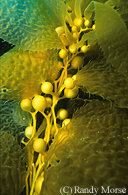Time: 3-5 class periods depending on instructional depth and expectations.
Materials/Resources:
- Kelp KWTL worksheet
- Kelp Structure/Function worksheet
- Video, The Worlds Below, by Sea Studios, ISBN 09616824-2-6 (optional)
- Book, Pacific Seaweeds, by Louis Druehl, ISBN 1-55017-240-240-9 (optional)
- Book, The Guide to Pressing Seaweed, by Alex Frost and Molly Fallon, ISBN 0974163104 (optional)
- Construction paper of various colors, colored markers/pencils, tape, scissors
- Live kelp samples (if available)
Internet Resources:
Research:
Birch Aquarium Voyager Giant Kelp site
Channel Islands National Marine Sanctuary Encyclopedia of the Sanctuaries kelp video
Inchinapinch Kelp Forest site
MBARI Giant Kelp site
Monterey Bay Aquarium All About Kelp site
Monterey Bay Aquarium/Sustainable Seas Deep Diver interactive site
PBS Cathedral in the Sea construct-a-kelp-forest lesson plan site
SiMON Kelp Forests Overview site
Field Trips:
Channel Islands National Marine Sanctuary
Channel Islands National Park
Ocean Futures
Sunnyside Sea Farms
UCSB Marine Sciences Institute (MSI)
Vocabulary:
classification
genus
species
Macrocystis pyrifera
Macrocystis integrifolia
algae/alga
kelp
holdfast
pneumatocyst
stipe
blade
emergent layer
canopy
understory
Procedure:
- Begin by writing the words, "giant kelp", in a visible place in the classroom. Distribute and have students individually complete the KWTL worksheet. Second, have students draw a picture of what they think a complete giant kelp alga looks like underwater on side two of the worksheet. When finished, collect and redistribute papers randomly to students. “Popcorn read” (students randomly read entries out loud) “know” entries and then “want to learn” entries. Discuss patterns of knowledge and learning goals of students. Have students discuss their personal experiences with and observations of giant kelp, if any.
- Show the “Kelp Forest” segment(s) from the video(s), The Worlds Below and Seasons in the Sea. The Worlds Below video is particularly appropriate because it is shown without commentary and allows students to observe giant kelp forests without directing their attention to particular details. The Seasons in the Sea video is likewise powerful if the volume is turned off. An extension may be to have students free-write a list of adjectives and/or descriptive phrases on a piece of paper while watching the videos. These can be crafted into a “free-form” poem to be shared in class (student poem examples).
- Distribute Kelp Structure/Function worksheet. Using the internet and/or text resources listed above, students complete Kelp Structure/Function worksheet. Students are encouraged to search collaboratively for the information. Students should use colored pencil in their illustrations. Discuss structure and function of the giant kelp alga using a “jigsaw” approach (small groups are responsible for reporting on specific information to the class as a whole).
- Lastly, using construction paper and other classroom or recycled materials, students are to create a 3-D giant kelp “forest” in a corner of the classroom to be hung from the ceiling. A convenient way to delegate construction responsibilities is to have student groups responsible for the portion of the giant kelp alga they reported on in procedure #3 above. Various segments and parts should be labeled with the structure name and function (emergent layer, canopy, stipe, blade, pneumatocyst, holdfast, etc.) Less space-consuming options for constructing the model giant kelp forest would be in a hallway display cabinet, in an empty aquarium, or on a bulletin board. A useful lesson plan for constructing an indoor kelp forest is found on the PBS Secrets of the Ocean Realm website.
- If fresh kelp is available, have students press it on white copy paper between wax paper and stacked text books. When dry, anatomical/physiological labels can be written on the paper. See The Guide to Pressing Seaweed for more detailed instructions.
- Field trip option: For those teachers lucky enough to teach near a Pacific shoreline, after storm field trips to the beach for a giant kelp scavenger hunt offers the ideal reinforcement of learned anatomy/physiology.
- Guest speaker option: For those teachers in the Santa Barbara/Ventura County, California area, the following list of guest speaker/field trip options are recommended.
Ms. Holly Lohuis, Ocean Futures Society, hlohuis@oceanfutures.org
Mr. David Kushner, Channel Islands National Park, david_kushner@nps.gov
Sunnyside Kelp Farms
UCSB’s Marine Sciences Institute
Homework:
Many of the above activities may can be crafted into a worthy homework assignment. Additionally, students can be asked to return to school with their favorite kelp website to be shared with colleagues and put into a class resource list.
Assessment:
See Unit Homepage
